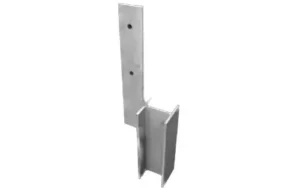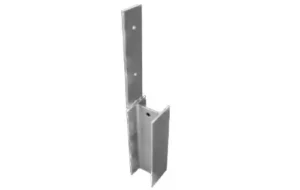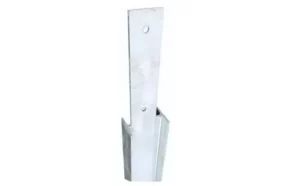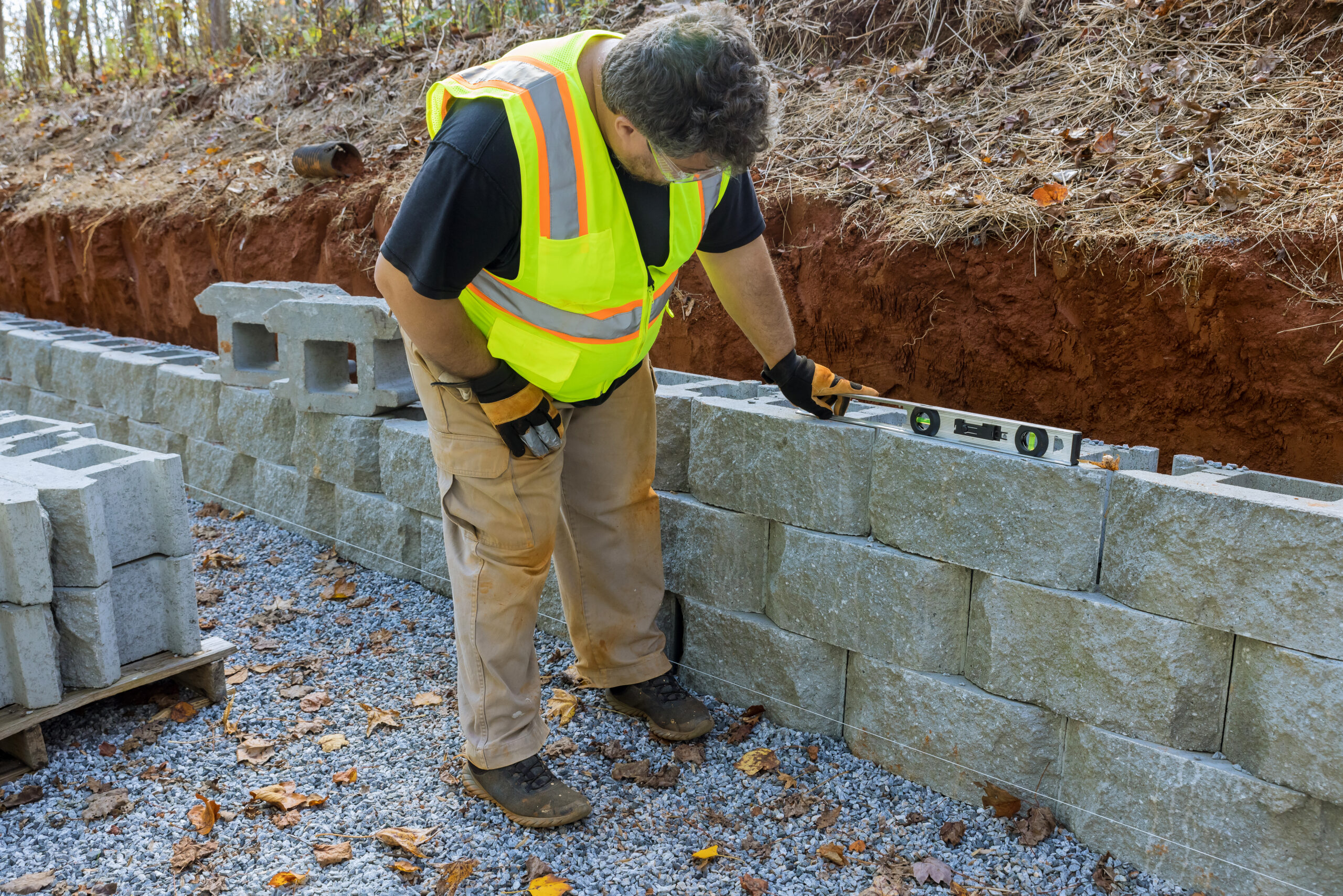Retaining walls are an essential part of many landscaping projects. They can create level areas in sloping gardens, support structures, prevent soil erosion, and enhance the overall look of your property. However, installing retaining walls can be hazardous if safety precautions are not followed. This article will discuss the safety measures every DIYer and homeowner must take when installing retaining walls.
9 Important Guidelines To Keep in Mind When Building A Retaining Wall
Here are 9 indispensable guidelines to ensure your retaining wall stands strong, safe, and stunning. As you embark on this construction journey, you must have the proper knowledge and best practices. These guidelines will lay the foundation for a wall that retains and captivates. Let’s delve into the intricacies of building a wall that truly stands the test of time.
Understand the Ground Conditions
Before initiating any excavation activities, a thorough evaluation of the soil type and the stability of the ground is paramount. The diversity in soil conditions can be vast, ranging from sandy terrains to clay-rich areas. Each soil type presents its own set of challenges and demands tailored wall designs and specific construction methodologies.
Beyond the soil itself, the role of drainage emerges as a critical factor. Effective drainage systems are vital in maintaining the wall’s integrity. In the absence of proper drainage, accumulated water can exert immense pressure on the wall.
This undue stress, if unchecked, can lead to the unfortunate and dangerous collapse of the wall. Thus, understanding the ground and ensuring efficient water flow are foundational to constructing a resilient retaining wall.
Proper Planning and Design
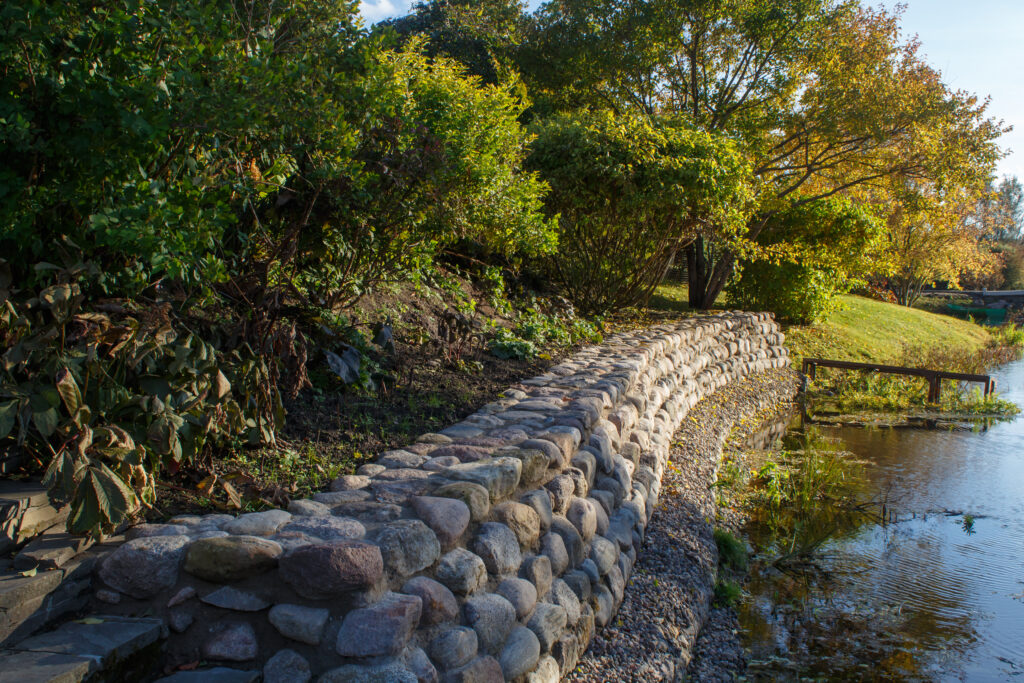
Embarking on a retaining wall project necessitates a well-thought-out plan right from the get-go. It’s much like setting a solid foundation before building upwards. This is particularly crucial for more complex or large-scale walls, where the intricacies demand a sharper focus and a well-charted plan.
A well-planned retaining wall is not just about longevity and aesthetic appeal, although these are significant perks. At its core, a well-laid plan ensures safety, which is paramount. A retaining wall that’s built on a solid plan doesn’t just stand tall; it stands safe, blending seamlessly with its surroundings while serving its purpose steadfastly. Remember, the time and expertise invested in planning today will echo in the quality and safety of your retaining wall for years to come.
Personal Protective Equipment (PPE)
When you’re on a construction site, especially while installing retaining walls, gearing up with Personal Protective Equipment (PPE) is a no-brainer. Think of it as the essential toolkit for personal safety. Each piece of gear has a unique role, from helmets and gloves to safety shoes and goggles.
It’s not just about wearing them; it’s about understanding their importance. Helmets, for instance, are your first line of defence against unexpected falling debris. On the other hand, safety shoes aren’t just about comfort; they offer solid traction and shield your feet from potential hazards. In the construction world, safety is always first, and PPE is your trusty sidekick in that mission.
Safe Handling of Materials
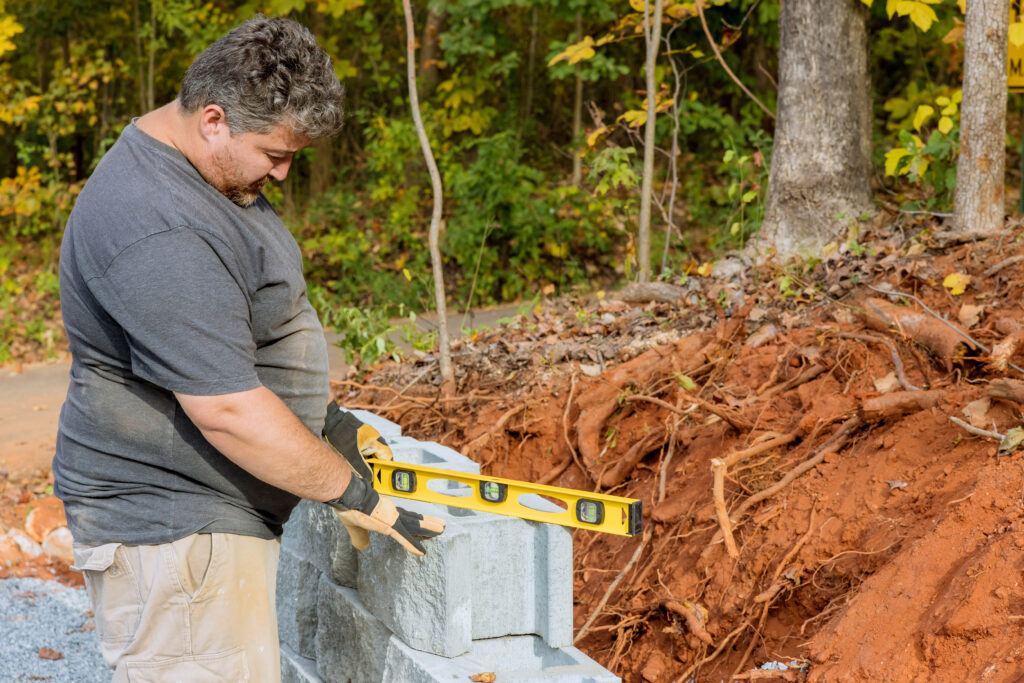
Handling big and heavy items like sleepers and stones is a task that needs care and attention. You could hurt yourself if you try to lift them the wrong way. Using machines or special equipment when dealing with such heavy stuff is always a good idea. These tools are made to help carry the weight and can make the job a lot easier.
But even when using machines, you’ve got to be careful about how you move and lift things. Your back is especially at risk if you’re not careful. Always remember to bend your knees and keep your back straight when lifting. Twisting or turning suddenly can be a recipe for injury. It’s like dancing – you’ve got to have the right moves! So, always take a moment to think about the safest way to lift and move things. It’s better to be safe than sorry, especially when heavy lifting is involved.
Trench Safety
Digging trenches is a fundamental aspect of constructing a retaining wall. However, it’s a task that demands a high degree of caution to prevent trench collapses, which can be fatal. Various factors can trigger a trench collapse, such as unstable soil conditions, heavy rainfall, or insufficient support for the trench walls.
Adhering to established trench safety guidelines is imperative to navigate these challenges. For instance, shoring is a technique that involves installing supports to keep the trench walls securely in place. On the other hand, shielding entails using robust structures to protect the trench from caving in. Alternatively, sloping allows the trench walls to be angled outwards to enhance stability.
These safety measures create a safer work environment, ensuring the trench remains stable throughout construction. It’s about marrying caution with practicality, providing the job gets done without compromising safety. So, as you delve into the trenching phase of your retaining wall project, keeping these safety guidelines at the forefront is crucial for a smooth and safe construction journey.
Proper Use of Tools and Equipment
Selecting the appropriate tools and equipment is a cornerstone of any successful construction endeavour. In the context of installing retaining walls, this principle holds even more weight. It’s not just about having tools; it’s about having the right ones, be it compactors, drills, or any other specialized equipment.
Adhering to the manufacturer’s guidelines isn’t just a recommendation—it’s a must. These instructions are there to ensure both the tool’s efficiency and the user’s safety. Moreover, while machinery can make tasks more manageable, it’s equally vital to equip oneself with the proper Personal Protective Equipment (PPE). Think of PPE as your shield when navigating the world of construction tools, ensuring you’re protected every step of the way.
A successful retaining wall project is as much about the tools you use as the precautions you take. It’s a balance of efficiency, safety, and practicality.
Stay Alert to Surroundings
Being on a construction site demands more than focusing on the task at hand; it requires a keen awareness of the environment around you. Overhead power lines, hidden underground utilities, and other unexpected hazards can pose significant risks if overlooked.
It’s not just about the physical structures, though. The presence of children and pets can introduce unpredictable elements to the work area. It’s essential to ensure they’re kept safe from the site.
Furthermore, organization is critical. Properly storing tools and materials isn’t just about tidiness; it’s a proactive step to prevent potential tripping hazards. Safety is a holistic approach in the construction world, encompassing both the big picture and the finer details. Always remember a well-organized and hazard-aware site is the foundation of a successful and safe construction project.
Regularly Inspect the Wall During Construction

Consistent check-ins and inspections are pivotal when constructing a retaining wall. It’s not just about building; it’s about ensuring that every brick and layer stands firm and functions as intended. Watch for any signs of instability or drainage problems during the construction phase. Addressing these early on, making tweaks and adjustments, can be the difference between a wall that stands strong and one that falters.
But the vigilance shouldn’t stop once the wall is up. After the completion, periodic inspections are just as crucial. Time can introduce new challenges, and regular checks can help spot and address any issues before they escalate. Building a retaining wall is a journey, not a destination. It’s about ongoing care and attention to ensure lasting stability and safety.
Seek Expert Advice When in Doubt
Navigating the complexities of installing a retaining wall can sometimes feel like charting unknown waters. If ever in doubt or feeling uncertain about any part of the process, it’s always wise to tap into expert knowledge. Reaching out to professionals or engineers isn’t just about seeking clarity; it’s about ensuring the integrity and safety of your project.
This comprehensive guide can be a great starting point for those keen on understanding the nuances between different retaining wall materials. If you want to add a touch of creativity to your outdoor space with concrete sleepers, here are some decorative ideas to inspire you.
Maintenance is crucial for the longevity of your retaining wall. If you’ve opted for steel posts, it’s essential to be aware of their care and repair. This step-by-step guide on building a steel post retaining wall can be invaluable for those embarking on a DIY journey. And if you’re looking for a broader overview, here are installation tips and the basics you need to get started.
For a deeper dive into the world of retaining walls, explore the different types of retaining walls and visit Concrete Sleepers Melbourne for a wealth of resources. Whether you’re interested in concrete sleepers or steel posts, they’ve got you covered.
Remember, there’s no harm in asking for directions regarding construction. It’s all about building the right and innovating with the right resources at your fingertips.
Conclusion
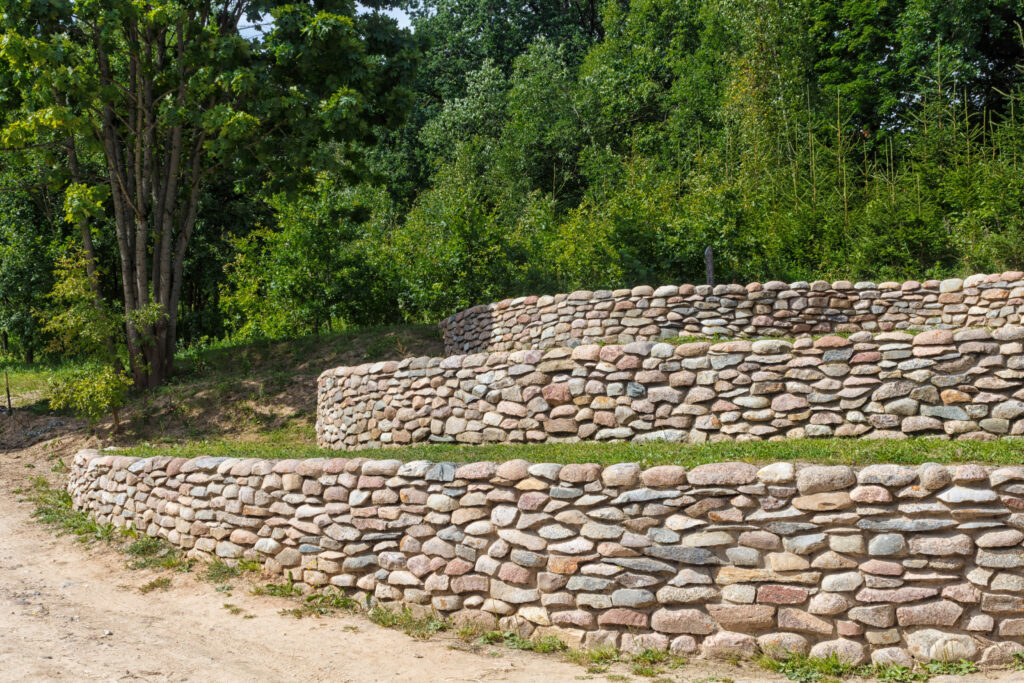
Embarking on the journey of installing retaining walls is no small feat. The process, while rewarding, comes with its set of challenges and potential hazards. But, as with many things in life, preparation and caution can make all the difference. By adhering to the safety guidelines detailed in this article, you’re not just building a wall; you’re building a legacy of safety and durability.
It’s tempting, especially in construction, to rush through processes or prioritize aesthetics above all else. However, it’s essential to remember that true beauty in construction lies in its longevity and safety. A wall that’s built swiftly but lacks structural integrity can’t compare to one built with care and caution.
In the end, the most captivating retaining wall isn’t just the one that catches the eye, but the one that stands resilient, year after year, offering a haven and a testament to quality craftsmanship. Always prioritize safety and durability; you’ll have a wall that’s both a visual delight and a sturdy guardian for years to come.

